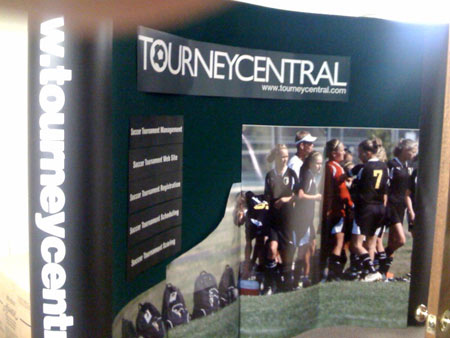Your soccer organization – whether a club, tournament or team – requires press exposure to help you build value for your sponsors and potential player or team base. However, it can be much more than getting a team photo in the local sports section. It can include a leap onto the newspaper city pages or the A block of the television news.
Here are eight simple rules for getting your soccer organization the press coverage you want. There are more, but these are the big ones.
Rule 1: Nobody cares about you.
What people do care about is what your organization does for your community, not just for kids who play soccer. They also care about the people behind the club or tournament. Think in terms of how your soccer organization contributes to your community, how it changes the world and write your story from a third person point of view. Think beyond soccer and frame the story from the perspective of someone who doesn’t know the sport or the players in the sport.
Rule 2: Know your journalists.
What do they care about? What kind of story bends their ear? Write your story as if you are telling your news only to them. Respect their time by putting the Who, What, Why, When and Where in the first paragraph. If they can’t tell what the story is about in the first few sentences, they won’t read further.
Rule 3: Advertising and editorial don’t mix. Ever.
The editorial staff at the newspaper, television station, magazine or web site does not care how much advertising you buy or if you buy any at all. The criteria for them are the newsworthiness of your story. And don’t ever “remind” the editorial staff that you buy advertising or suggest that the sale of their news product will increase if they tell your story. Doing so is disrespectful and unprofessional and almost guarantees your news won’t run.
Rule 4: Write your press releases in AP Style.
If you are not familiar with AP Style, buy the AP Stylebook (apstylebook.com) and live by it. Your story will stand a better chance of being published if editors don’t have to rewrite it. The stylebook is a yearly edition, so be sure to keep up-to-date.
Rule 5: Be tenacious, but not annoying.
Remember rule one. If your story doesn’t run, it probably means that it wasn’t newsworthy enough, even if it was near and dear to your heart. Keep refining the stories you tell and tell a lot of them. Editors are human beings and sometimes they just give people a break for sticking with it against all odds.
Rule 6: Never, never, never tell a news organization who else published your story.
While it may be great news to your soccer organization that you were featured on ESPN2, to an editorial department, you just told them your story is old news.
Rule 7: Think hyper-local.
Newspapers especially are focused on becoming the hyper-local voice of their community and your soccer organization has built-in hyper-localism. Keep your stories focused on the local community. The more personal, the better.
Rule 8: Keep making news.
Most soccer organizations will just send out a press release before their tournament or tryouts and wonder why they don’t get press. A soccer organization is a 365/24/7 operation that makes news all year long. Keep telling these stories.
I may have misled you a bit about the “simple” part in the headline. Getting your soccer organization in the news is as simple as saying you just need to find a bunch of kids to make a soccer club. Like your soccer organization, it takes discipline, a plan, dedication and hard work. The rules are simple, but it is work. The reward is a stronger, and more recognizable brand to potential sponsors, government organizations and your community at large, which helps you achieve your soccer organization goals a little more comfortably.
